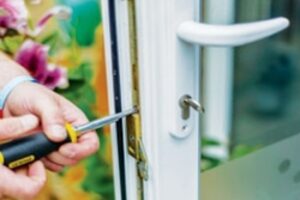5 Laws That'll Help With The Knob Lock Replacement Industry
Knob Lock Replacement: A Comprehensive Guide
Knob locks are easy yet important parts for home security. Although they are often the very first line of defense, they can break or become damaged with time, requiring their replacement. This post supplies an extensive take a look at knob lock replacement, consisting of when and how to do it, the tools needed, and answers to often asked concerns.
Comprehending the Need for Knob Lock Replacement
Knob locks play an essential role in safeguarding homes and structures. However, various factors might warrant their replacement:
- Wear and Tear: Frequent use can result in destruction, making locks less reliable.
- Loss of Key: Losing a secret can endanger security, prompting a lock modification.
- Broken Lock: Accidental damage or tried break-ins can render locks inadequate.
- Upgrading Security: Homeowners might wish to upgrade to a more secure locking mechanism.
Signs that a Knob Lock Needs Replacement
Identifying when to replace your knob lock can save property owners from future headaches. Here are some indications:
- Difficulty Turning the Key: If the key does not turn smoothly, it might be time for a replacement.
- Loose Knob: A knob that wobbles or feels loose can jeopardize security.
- Noticeable Damage: Cracks or chips in the lock show considerable wear and should be replaced.
- Rust or Corrosion: Signs of oxidation can impact the lock's efficiency.
Tools Required for Knob Lock Replacement
Before starting the replacement process, it's vital to collect the essential tools. A well-prepared toolkit normally consists of:
Tool
Purpose
Screwdriver (Flat & & Phillips)
To eliminate the screws from the lock.
Drill (if needed)
To create new holes for the new lock.
Measuring Tape
To measure door density and backset.
Replacement Knob Lock
The new lock to be set up.
Step-by-Step Guide to Replace a Knob Lock
Replacing a knob lock is within the skill level of the majority of homeowners. The list below steps supply a straightforward guide to ensure the procedure goes smoothly:
Step 1: Gather Your Supplies
Guarantee you have collected all essential tools and your replacement lock.
Action 2: Remove the Old Lock
- Locate and eliminate the screws protecting the lock to the door.
- Thoroughly pull the knob and the locking mechanism apart from both sides of the door.
- If necessary, use a drill to remove any screws that can not be reversed by hand.
Action 3: Measure Door Specifications
Procedure the density of the door and the backset (range from the door edge to the center of the lock). Many knob locks include adjustable features to accommodate different door sizes, but making sure compatibility is essential.
Step 4: Install the New Lock
- Place the new lock into the hole.
- Line up the exterior knob with the interior knob, guaranteeing they are properly positioned.
- Secure the lock with screws, ensuring they are tightened up adequately but not overtightened to prevent stripping the screw holes.
Step 5: Test the Lock
After installation, test the performance of the new lock. Make sure that the key turns efficiently and that the knob operates without any resistance.
Step 6: Final Adjustments
If the knob feels loose or if the lock is not working perfectly, confirm your work. Adjust screws and guarantee all components are firmly attached.
Maintenance Tips for Knob Locks
Post-replacement, maintaining a knob lock is essential for its durability. Homeowners can utilize a number of practices:
- Regular Lubrication: Apply graphite or silicone lubricant to the keyhole to keep the mechanism smooth.
- Cleaning up: Wipe down the knob frequently to avoid grime accumulation.
- Check for Damage: Periodically check for wear and tear, specifically after extreme weather condition.
Frequently Asked Questions
1. Can I change a knob lock myself?
Yes, replacing a knob lock is a DIY-friendly job. With the right tools and a fundamental understanding of the procedure, property owners can comfortably complete the replacement.
2. What type of knob appearance should I pick?
Select a knob lock based upon your security requires. Grade 1 locks provide the highest security, while Grade 3 locks appropriate for interior doors.
3. How do I select the ideal size lock?
Measure the density of your door and the backset range. The majority of knob locks are adjustable to fit different sizes, however it's crucial to examine compatibility with your door requirements.
4. What should I do if the new lock does not fit?
If the new lock does not fit effectively, speak with the producer's instructions for size changes or contact an expert locksmith professional for assistance.
5. Is it necessary to replace all locks at the same time?
Not necessarily. It's typically useful to change locks as issues emerge. Nevertheless, for consistency, numerous homeowners decide to replace all locks at the very same time, specifically if they are part of a bigger security upgrade.
Knob lock replacement is a practical task that can substantially boost home security. By following Repair My Windows And Doors described in this guide, house owners can successfully replace their locks, ensuring a secure and safe environment. Routine upkeep and watchfulness can even more boost the longevity and effectiveness of knob locks, providing assurance for years to come.
